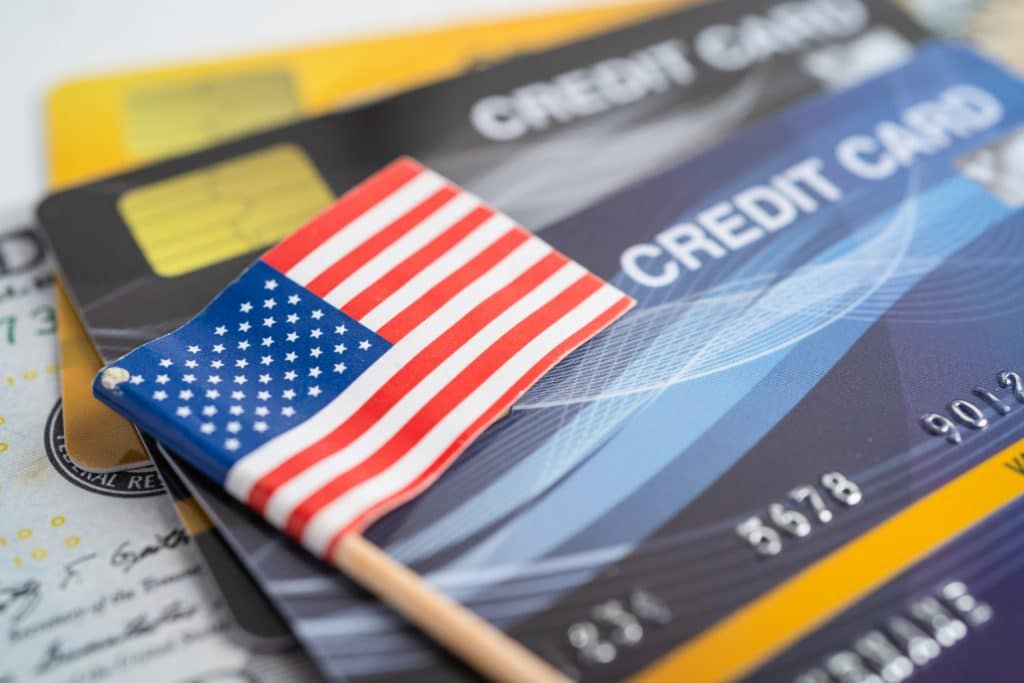US credit card delinquencies trend in Q1 2025: Understand consumer behavior

Anúncios
Rising US credit card delinquencies in Q1 2025 are sounding alarms across the financial landscape. With payment delays mounting, the trend reflects more than just missed bills, it signals deeper shifts in consumer resilience.
What’s fueling this spike in overdue credit? From inflation aftershocks to shifting spending habits, several factors are reshaping how Americans manage debt.
In this article, we break down the latest numbers and what they really mean for borrowers, banks, and the broader economy.
Current state of credit card delinquencies

The current landscape of US credit card delinquencies is shifting rapidly, reflecting growing stress among consumers as they navigate persistent inflation, elevated interest rates, and tighter financial conditions.
As we move through 2025, the first quarter has already highlighted signs of strain, with rising payment delays signaling potential trouble for both households and lenders.
Recent data from the Federal Reserve Bank of St. Louis reveals that by Q1 2025, 12.1% of consumers were at least 30 days behind on payments, while 14.1% of the total credit card debt was categorized as delinquent.
Even more concerning, 10.7% of cardholders were over 90 days past due, showing how deeply some individuals are falling into debt.
These figures reflect one of the highest levels of delinquency since the 2008 financial crisis, underlining the severity of the current trend.
Recent Trends
Although delinquencies began rising back in 2021, the surge accelerated through 2023 and 2024, eventually reaching a plateau in early 2025.
The Federal Reserve’s Q1 2025 report shows a small decline in charge-off rates, from 4.54% in Q4 2024 to 4.29% , but overall delinquency levels remain stubbornly high.
Several financial institutions, including JPMorgan and Bank of America, have noted in earnings calls that while their prime customers remain stable, subprime borrowers are showing signs of financial distress due to increased living costs and dwindling savings.
One key factor is the elevated cost of essentials like food, housing, and utilities. According to the New York Fed, many consumers have begun prioritizing necessities over debt repayment, leading to a rise in missed credit card payments.
Additionally, with the Federal Reserve maintaining interest rates at historic highs to combat inflation, the cost of borrowing has surged, making it harder for consumers to manage revolving debt.
Behavioral and Structural Drivers
Beyond macroeconomic pressures, behavioral shifts are playing a role.
Easier access to digital credit products has encouraged impulsive spending, especially among younger demographics who are more likely to use buy-now-pay-later services and mobile credit platforms.
However, these tools often obscure the real cost of debt and can trap consumers in repayment cycles they can’t manage.
Furthermore, the Philadelphia Fed’s latest credit card performance report notes that while some improvement was seen due to seasonal patterns and tighter underwriting standards, the number of low-score accounts continues to rise, a worrying signal for default risk in the upcoming quarters
Delinquency Rates Comparison
Comparing delinquency rates across quarters confirms the upward trend. From 2.96% in Q1 2023 to 3.08% in Q4 2024, and now 3.05% in Q1 2025, the figures suggest that while the growth in delinquencies may have slowed, it hasn’t reversed.
Economists warn that unless consumer income rebounds or inflation eases significantly, the pressure on household budgets will persist, keeping delinquency rates elevated throughout 2025.
As the data unfolds, it becomes clear that the US credit card delinquencies trend is more than a temporary blip, it’s a sign of deeper vulnerabilities in the economic fabric.
For both consumers and financial institutions, staying informed and proactive is essential to manage the challenges ahead.
Factors influencing delinquency rates
The rising trend of US credit card delinquencies isn’t driven by a single cause. Instead, it results from a complex web of economic pressures, behavioral habits, and structural challenges.
To fully understand why delinquency rates continue to climb, it’s crucial to examine the underlying influences shaping consumer repayment behavior and financial resilience.
Economic Conditions
Economic volatility remains one of the strongest predictors of credit card delinquency. During downturns, consumers often experience job losses, reduced working hours, or stagnant wages, all of which directly limit their ability to meet monthly obligations.
In Q1 2025, although unemployment remained relatively stable, inflation continued to erode purchasing power, forcing many households to redirect income toward essential expenses like rent, groceries, and utilities.
This squeeze on disposable income has left less room for managing revolving credit balances, especially as interest rates on cards remain at multi-year highs following the Federal Reserve’s anti-inflation measures.
For many, the burden of servicing existing debt now exceeds their ability to keep up with minimum payments, which naturally contributes to rising delinquencies.
Consumer Behavior
At the individual level, shifts in spending behavior are also playing a major role in the growth of credit card arrears. Many consumers increasingly rely on credit cards not just for large purchases, but for everyday essentials.
This trend has intensified since the pandemic, with some households viewing credit as a bridge for survival rather than convenience. Unfortunately, this often leads to the accumulation of high balances with little planning for repayment.
Without clear tracking of spending or budgeting, it’s easy for consumers to fall behind, especially when promotional periods expire or interest rates reset.
Additionally, the rise of digital lending tools and buy-now-pay-later services has conditioned consumers to adopt a “pay later” mindset, sometimes without fully understanding the terms or long-term consequences.
Emotional spending, particularly in times of economic or personal stress, further exacerbates the issue.
When anxiety rises, financial decisions tend to become more reactive, leading to mismanagement of obligations that might otherwise be handled with discipline.
Financial Literacy and Lender Practices
A critical, though often overlooked, factor is the level of financial literacy among consumers.
Those who do not understand how interest compounds, how minimum payments work, or how payment history affects credit scores are more likely to fall into delinquency.
As a result, many cardholders miss payment deadlines or make only minimum payments, inadvertently trapping themselves in cycles of long-term debt.
Lender policies also shape delinquency dynamics. Banks and credit card issuers may raise APRs, reduce credit limits, or change repayment structures in response to risk assessments or broader market shifts.
These adjustments can catch financially vulnerable consumers off guard, particularly those living paycheck to paycheck.
While intended to protect the issuer, such moves can have the unintended consequence of increasing defaults among borrowers with limited flexibility.
Comparison with previous quarters

Analyzing US credit card delinquencies across recent quarters reveals a consistent upward trajectory that reflects growing financial pressure on American households.
These changes aren’t merely statistical fluctuations, they highlight deeper economic shifts and evolving consumer vulnerabilities that are shaping the credit landscape in 2025.
Quarterly data from the Federal Reserve Bank of St. Louis and the FRED platform show that the national delinquency rate for all commercial banks reached 3.05% in Q1 2025, down slightly from 3.08% in Q4 2024.
While this dip may appear encouraging, it follows a sustained climb that began in 2022, when the rate was closer to 2.3%, and marks one of the highest levels in over a decade (FRED).
The marginal decline suggests that delinquencies may be stabilizing, but not reversing.
Looking back, Q1 2023 showed moderate stress, with delinquencies hovering around 2.5%, as pandemic-era savings began to dry up and inflation picked up pace.
By Q2 2023, these rates nudged higher due to the ongoing rise in living costs and the beginning of tighter credit conditions.
In Q3 2023, delinquency rates surged past 2.8%, reflecting a growing reliance on credit cards for daily necessities and the diminishing impact of government relief programs.
Q4 2023 marked a critical inflection point, as rates peaked above 3%, fueled by continued inflation, higher interest rates, and shrinking personal savings.
Despite signs of stabilization in early 2025, the broader credit environment remains fragile.
A report from the National Creditors Bar Association notes that while charge-off rates (debts written off as uncollectible) declined slightly in Q1 2025, from 4.54% in Q4 2024 to 4.29%, overall delinquencies stayed elevated, especially among subprime borrowers.
The Philadelphia Fed also emphasized that delinquencies fell marginally due to seasonal tax refunds and revised lending standards, but flagged growing risks in accounts with lower credit scores.
Impact on financial institutions
The impact on financial institutions due to rising credit card delinquency rates is profound.
As more consumers struggle to pay their bills, banks and credit card companies experience significant challenges. This situation can affect their overall stability and profitability.
When delinquency rates increase, financial institutions face a higher risk of losing revenue. Unpaid debts translate to losses that can impact a company’s financial health.
This can lead banks to tighten their lending standards, making it harder for consumers to obtain credit.
- Increased loan reserves for potential defaults
- Altered credit policies and applications
- Higher interest rates on future loans
- Potential layoffs or cutbacks in services
Moreover, banks might reassess their risk management strategies. They may invest in advanced analytics to predict and mitigate defaults more effectively.
The evolving landscape demands that financial institutions adapt rapidly to avoid significant losses.
Effects on Lending Practices
As credit card delinquency rates rise, lending practices may also change. Lenders typically become more cautious about approving new loans.
They may focus more on consumers with higher credit scores, potentially excluding those who need credit the most. This shift can create barriers for low-income individuals or those with less established credit histories.
Additionally, financial institutions might increase interest rates across the board. They could argue that this adjustment is necessary to cover rising defaults.
As a result, even responsible borrowers may find themselves facing higher costs, which could lead to further financial strain.
Long-Term Consequences
The long-term consequences of increased delinquency rates can be severe. If financial institutions do not navigate these changes carefully, they might face reputational damage.
Consumers may lose trust in their ability to manage credit, leading to shifts in customer loyalty and behavior.
Through understanding the impact on financial institutions, stakeholders can develop strategies to adapt to new challenges.
Maintaining a focus on risk assessment and consumer education is vital for navigating the complexities of the current economic environment.
Future predictions and consumer behavior
Analyzing future predictions and consumer behavior offers valuable insights into how credit card delinquency rates might evolve.
With ongoing economic changes, it’s essential to understand how consumers may respond to these shifts in credit landscapes.
As we look ahead, several trends are likely to influence consumer behavior. For instance, technological advancements in financial services can change how consumers manage their credit.
Mobile banking apps and automated reminders may encourage timely payments and responsible spending.
- Increased use of budgeting tools and financial apps
- Higher awareness of credit scores
- Growing preference for cashless transactions
- Shift towards sustainable and mindful spending
Moreover, education around personal finance is becoming more accessible. As more resources become available, consumers are likely to prioritize understanding their financial health.
This knowledge can lead to better decision-making when it comes to credit and debt management.
Economic Conditions Influence Behavior
The state of the economy will heavily influence how consumers react to credit. If inflation continues, individuals may become more cautious. They might prioritize saving over spending, leading to a potential decrease in credit card usage.
However, if the economy stabilizes, we could witness a resurgence in consumer confidence, encouraging spending once again.
Additionally, demographic shifts, such as younger consumers entering the market, will impact demand for credit products. These consumers often have different expectations and behaviors compared to older generations.
They may prefer flexible credit solutions or alternative payment methods, affecting the overall delinquency landscape.
Potential Risks and Opportunities
Future predictions also indicate that with increased credit access comes the risk of higher delinquency rates, especially for younger borrowers. Financial institutions may need to adapt their strategies to address this vulnerability.
On the flip side, those same institutions have ample opportunity to innovate. Developing targeted programs to assist high-risk borrowers could not only minimize defaults but also enhance customer loyalty.
By closely monitoring future predictions and consumer behavior, businesses can position themselves to thrive. Staying ahead of consumer trends is key for navigating the complexities of the credit market in an ever-evolving economic environment.
Continue on our website and read more: BNPL Impacting FICO Scores: What You Need to Know in 2025.
FAQ – Frequently Asked Questions About US Credit Card Delinquencies
What trends are driving credit card delinquency rates?
Economic factors like inflation, increased cost of living, and changing consumer behavior are significant drivers of rising credit card delinquency rates.
How do delinquency rates affect financial institutions?
Higher delinquency rates can lead to increased risks for financial institutions, prompting them to tighten lending standards and adjust interest rates.
What role does consumer education play in managing credit?
Greater consumer education about credit management helps individuals make informed decisions, potentially reducing delinquency rates.
What are potential future predictions for consumer behavior?
Future predictions indicate that consumers may become more cautious in their spending habits, focusing on financial stability and responsible credit use.





